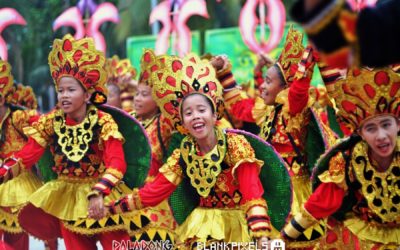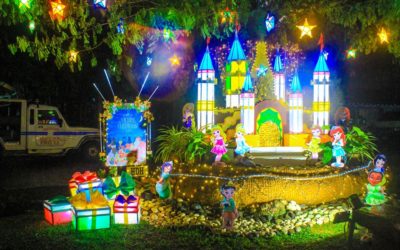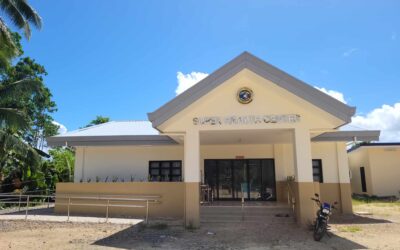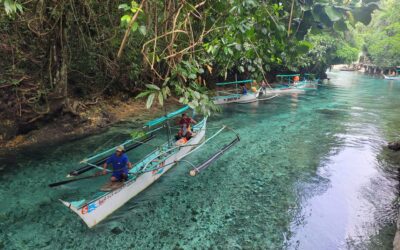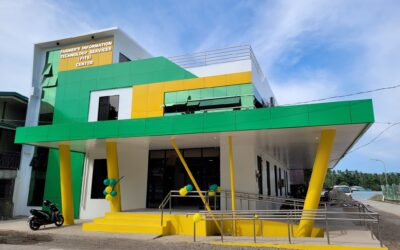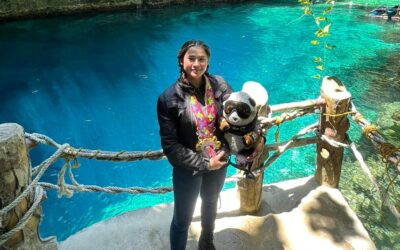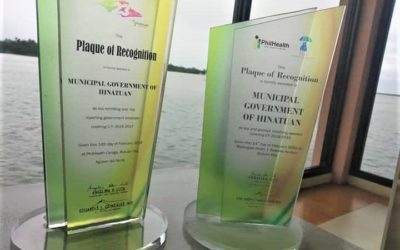ABOUT THE MUNICIPALITY OF HINATUAN
VISION & MISSION
Vision
Hinatuan, a highly livable, tourists and investors’ friendly Municipality in the South where empowered people live in a resilient environment under a dynamic leadership.
Mission
Guided by the principles of good governance and our core values, we are committed to accelerate sustainable development and promote inclusive growth in providing quality basic services.
HISTORY OF HINATUAN
Hinatuan, one of the seventeen (17) municipalities of Surigao del Sur, is located at the mouth of the Hinatuan River at the eastern seacoast of Mindanao. It is bounded on the east by the Pacific Ocean, on the northeast, by part of the municipality of Barobo, on the northwest, by part of the municipality of Tagbina, and on the west, by part of the province of Agusan del Sur, and on the south, by the municipality of Bislig.
The coastline is irregular, stretched unbrokenly with white beaches. There are thirteen islets, six of which are fully planted with coconuts, skirting the coast, just a few nautical miles from the world’s deepest through, known as the Philippine Deep, which besets the town’s supply of marine products for the consumption of the people of Hinatuan and its neighboring towns.
There are twenty-four barangays, majority of which are located along the coast and thirteen of which are relatively big barangays with an average population of more than 1, 000. The municipality is traversed by three big rivers, namely: the Hinatuan River, Bigaan-Loyola River, and Tagasaka-Tarusan River. These rivers and its good seacoast, together with its cool climate brought about by the mountain ranges of Baculin, Tagbobonga-Panlimoknan-Tagongon, and Tandawan, which are rich in soil fertility provide plentiful supply of forest products. These ranges are gradual in their ascending heights and are rolling in nature with the absence of steeps except the one riding at Baculin Point. They are not close to the sea, nor are they rocky in nature. This is one geographic factor, which predominates the areas along the coast to be vastly agricultural which greatly affect the socio-economic life of the people. The high places serve as havens of wild life resulting to the balance ecosystem of the municipality.
The total land area of the municipality is 43,140.3582 hectares in which 15,326.3 hectares are agricultural lands composed of 2,358 farm lots, the highest number among the municipalities of the Second District of the province. This total agricultural land area is 14.12 percent of the total agricultural land area of the whole province. The statistics pointed out too that 1,109.91 hectares of swamp lands and sea beds are now developed into fishponds for the culture and production of bangus, tilapia, shrimps, sugpo and crabs. Considering, therefore, the vast areas for agriculture and marine and aquatic resources, the major sources of livelihood are fishing, and farming; and other related industries like fish processing, seaweeds culture and various home and cottage industries. Copra, the chief product of the municipality, ranks first in production in the entire provinces of Agusan and Surigao. Marine and aquatic products are daily shipped in volume of kilos to neighboring towns and cities, which heightens the income of the town’s coffer and greatly improved the standard of life of the people.
Her nearness in location, being one of the municipalities in the southern part, to the Paper Industries Corporation of the Philippines (PICOP) at Mangagoy, Bislig and her accessibility by land transportation to the cities of Butuan, Surigao and Davao greatly influence her growth in agricultural, trade and commerce, and home industries as well as her gradual development in countryside progress.
Originally, the town’s name was derived from the words “Hato” and later called “Hatu-an.” These words have two versions. “Hato” in the native dialect connotes “a method of preserving fish,” the place being abundantly noted for fish. Obviously, too, “an” has been added to “Hato” to denote a place of preserving fish. To facilitate phonetic sound, the name of the place was made of record “Hinatuan.” Another version tells of a story of a Boholano migrant, who, out of curiosity, asked a native Manobo-Mandaya in Visayan dialect, “Asa ihatud niining nagsakay nga mga tawo ug mga pagkaon?” Perhaps the words were so strange to the ears of the native that the poor Manobo had to repeat the word this way: “Hinatudan.” To the Boholano the word uttered was the name of the place. It was, however, during the later part of the Spanish regime that the name was changed to “Hinatuan”, after the omission of the letter “d” by the Visayan immigrants who came flocking to the nearby villages of the town as land-seekers and traders.
Historical belief had it that the aborigines of Hinatuan were a conglomeration and mixture of different racial ethnic tribes, namely: the Mandayas, the Mansakas, the Suban-ons, and the Manobos. These racial groups, in the opinion of Filipino historians and sociologists, were of the Malayan-Indonesian ancestry which took place thousands of years ago, more particularly during and after the Pleistocene of the Glacial Ages.
Social blending and intermingling of these racial ethnic tribes took place through the processes of assimilation… the fusion of the different cultures and friendly ethnic groups as a result of social intercourse in trade and barter systems and religious beliefs, and amalgamation the intermarriages of said tribal groups. With these processes, which operated even in periods of conflicts and strife, it became obvious that these tribal groups of people, in widely scattered villages, not only cut across the divisions of ethnic lines, but soon became united by common interests for common good. While it is admitted that there were group of tribes who refused to embrace the common interest of other groups and to reduce physical differences into a more unified community system, being instinctively individualistic in attitude, or by ignorance or superstition thereby developing a feeling of apathy or indifference to accept innovation. However, the religious influences of the missionaries in later years, coupled with the influx of Christian immigrants in search of fertile and virgin lands as well as those who came and were thrilled by the spirit of romance and adventure, slowly but gradually brought about many changes in the lives of the natives. Apparently, many of them lost their identities as they embraced the oriental culture, which was later followed by their adoption of the western civilization introduced by the Spaniards through the precepts of the Christian way of life.
This resulted to the establishment of the early settlement of the town in 1851, through the energetic efforts of a fearless native leader, who was known as Datu Raymundo Bandola, the founder and first administrator of the town, with the assistance of Eusebio Lindo and Atanacio de Castro near the Buhisan, “a living stone”, bank of the Hinatuan River, known to the old folks as Daan Lungsod, which is now a ten-minute ride upstream on a motorboat from the present town site of Hinatuan.
In 1856, Capitan Politico-Militar, Don Inocencio Bernabe, who was in charge of establishing pueblos in the eastern part of Mindanao, was ordered to take direct control of the transfer of the settlement from “Daan Lungsod” and the establishment as a town of Hinatuan at the mouth of the Hinatuan River in compliance with the instruction from the Spanish Governor-General stationed at Manila. The reasons for the transfer were: for security, wherein the town proper, Loyola, Tidman and San Juan will be protected from the rampant Moro piracy; to make it easier for the Spanish authorities to collect tributes as well as for the enforcement of forced labor; and to pave the easiest way in spreading Christianity by the missionaries. The transfer of the town was hastened through the energetic and able leadership training in military tactics and duties of a guardia civil at Malacañang Palace and have been acclaimed a hero by the natives due to his victorious campaigns against Moro piracy; Edubejio Lando, Atanacio de Castro, Don Fernando (Balaraw) Nazareno, Don Tomas Luna, Don Teodoro Villaluz, Eugenio Villaluz and Bartolome de Catro. There was a beehive of activities at the new town site. Every head of the family was given free lot for their residence including virgin farm lots for cultivation. What was once a swampy land of nipa palms and mangrove trees infested with alligators, snakes and mosquitoes, became a new frontier town with people’s spirit was full of enthusiasm and determination to carry on the wheel of prosperity to its peak. In the early period of its gradual transfer, Hinatuan was under the administration of Encomienda de Bislig, province of Caraga. History had it that in the later period of the Spanish regime, Bislig accordingly, was reverted into a barrio of Hinatuan. The conversion was due to the apparent decrease of its income taxes caused by heavy payment of tributes as well as forced labor. The area of jurisdiction then of Hinatuan practically covered to as far as Catarman Point in the south, up to Point Baculin which included all the areas of the present City of Bislig and municipality of Lingig.
No attempts were made to spread Christianity in Hinatuan by the missionaries during the intervening years from 1856 to 1874. This was attributed to the historical fact that there was a great shortage of Christian missionaries as brought about by the expulsion of the Jesuits from the Philippines. The Recollects, who took over, were only few in number, and therefore, not in the position to cope up with the religious demands of the time.
Nonetheless, the practices of the Christian way of life were observed and carried on by the natives. These were brought and introduced by the Christian settlers from Bohol, Cebu, Leyte, Davao, Agusan and other provinces in search for fertile lands and to escape from the abuses of the Spanish authorities. In 1874, as A.H. Van Odijik, M.S.C. pointed out in his book, “History of the Christianization of the Dioceses of Surigao and Butuan,” through the interpretation of Fr. Bracken, that missionaries, Frs. Saturnino Urios and Parache, were in Bislig converting thousands of Mandayas to Christianity. In that same year, through the help of a Mandaya guide, they were able to reach Bigaan, now a barangay of Hinatuan, and there baptized a hundred of adult Mandayas. To get more converts, Fr. Pastells, in 1877, tried to reach Hinatuan from Bislig by way of the hinterlands, but he and his guides were lost on the way, for they were being attacked by forest worms. A year later, it was said that, Fr. Martin Luego took the same road his predecessor had taken. He reached the small village of Loyola in the summer of 1879, and there blessed the first constructed chapel of the town followed by the baptism of 104 Mandayas. Then in 1880, the feast of the first saint, St. Ignatius de Loyola, was celebrated with pomp and splendor.
Van Odijik pointed out further that the missionaries reached Hinatuan from Loyola in 1879. Religious rites and services were held by the religious missionaries in a ramshackle hut for there was no convent in town. They were housed later on a three-room convent constructed by some town leaders led by Captain Don Tomas Luna, who was then the fourth chief executive of the town. Then, three years later, a successful mission was preached in Hinatuan, which led the whole town into confession and received Holy Communion. The apostleship of Prayer was then founded, and, there was great propaganda for the devotion to the Sacred Heart of Jesus. A year later, the mission of the Gospel reached the barrio of San Juan. A chapel was constructed, a church bell from Madrid arrived and was mounted at its belfry, and a Catholic school for boys and girls were established.
In 1890, Fr. Zambu was assigned as Parish Priest of the town. With the help of Capitan Fernando “Balaraw” Nazareno, who was then the Administrator of the town, he initiated, it was said, the construction of the first strong and permanent church and convent in town made of Hamurawon posts and slabs of bit stones shaped and hauled from seashore at the expense of forced labor. This church, roofed with nipa thatches, was said to have been completed just as the term of office of Capitan Nazareno ended in 1896, while the convent was left to the completion of Capitanes Teodoro Villaluz and Eugenio Villaluz. This convent stood for a period of forty-six years after which it was destroyed by the typhoon of 1942, while the church stood for twenty years when it was destroyed by both a typhoon and an earthquake in 1914 and 1916, respectively.
Meanwhile, the conversion of the natives to Christianity continued. Fr. Zambu, with the help of Ex-Capitanes Atanacio de Castro and Fernando Nazareno, continued the spread of Christianity especially to the Mansakanhons in Tagasaka, the Pulahan Mandayas of Tarusan, the Manobo-Suban-ons along Carpenito-Malixi riverbanks, and the Manobos at Butuan, Soriano, Javier and Bahi. In order to secure a good base and greater hold in the fulfillment of the mission of the Gospel in the hinterlands, churches were constructed in Malixi by Fr. Matias in 1901 and in Carpenito by Fr. Martino in 1906.
After the construction of the permanent convent, catechism for boys and girls was offered with the “Doctrina Christiana” as the core of instruction. This move was given greater impetus during the administration of Capitan Teodoro Villaluz up to the administration of town President Candido L. Viola at the outbreak of World War II. Religion was integrated as part of the curriculum of the school from 1896 to 1935, when the Constitution of the Philippines was ratified, making religious instruction optional in public school.
In 1898, it was said, Fr. Nicasio Jansen, who was then assigned as Parish Priest of the town, felt the great need of constructing a new and permanent church. With the help of Juan Viola, the first and the oldest Sacristan Mayor of the Parish, and some town leaders led by town President Antonio Pecasales, Fr. Jansen was able to secure an architectural plan and specifications for the proposed new church from Engineer Jesus Litonjua, the then City Engineer of Manila, through his brother, Dr. Luis Litonjua, the assigned town physician. This present church is a replica of the church of Baguio City for the same architectural plan and specifications was given by Engineer Litonjua. The construction of the church started, but with the untimely transfer of Fr. Jansen, the work was continued by his successor, Fr. Guillerno Ari, through the best workmanship in masonry of Brother Van Damn, who was responsible for the cementing of the floorings of the Church, which has later become the Hinatuan Parish Church in honor of Patron St. Augustine.
After World War II during the administration of Fr. Vicente Celeste of the Parish, renovations of the main altar and its roofing were made with free service and assistance from Florentino de Castro. Church roofing was completed under Rev. Fr. Jose Falcon’s term, while the construction of its ceilings was done during the administration of Rev. Fr. Willie Sanchez. The paintings of the whole church and roofing of the convent were undertaken by Rev. Fr. Elpedio K. Pastera, Jr. The succeeding Parish Priest Rev. Fr. Romelito C. Guillen initiated several renovations including the reinforcement of the two spires with by concrete column to support the dilapidated structures; repair of the altar area specially the sub-base structure of the floor, allegedly ravaged by treasure hunters; installation of floor tiles at the front entrance of façade of the church and the replacement of the concrete canopy of the left and right side entrance of the church.
After Fr. Guillen, Rev. Fr. Carlos P. Bautista further beautified the interior of the church. On the first week of July 2002, Rev. Fr. Nestor O. Climaco assumed as Parish Priest and School Director of the Father Urios Academy. In two years time, he initiated projects, such as the re-painting of the Church, completion of the two room school building, and construction and painting of perimeter fence. In the first quarter of 2005, the Dominican Sisters of the Holy Trinity arrived. Primarily, they were tasked to manage the Father Urios Academy, which had been saddled with financial problems. A separate convent for the nuns was constructed. Starting July 2005 to date, Rev. Fr. Antonio M. Galela became the Parish Priest. It was under his and Parochial Vicar, Rev. Fr. Godofredo Quiamson’s term where the altar of the Church became as it is now, majestic and elegant.
On June 1, 2011 up to the present, through reshuffling of assignments, Rev. Fr. Emmanuel G. Dumadag took over as Parish Priest. Presently, Rev. Fr. Gamaliel P. Joyo leads the local community in the preservation of Catholic belief and traditions in this modern era of the town, as the new Parish Priest.
The municipality of Hinatuan, at its present outlook, is markedly on its road to countryside progress. With an approximate population of no less than 40,000 or a ratio of 1:08 hectares, the constant factor of 0.2 in population increase of the municipality for the past sixteen years would somehow, be lessened by the positive and supportive attitude of the people to infuse the benefits and usefulness of family planning as against the disadvantage of population explosion.
It has been observed and said that great changes took place in the lives of the people. Foremost among these is the change in attitude of the people. The spirit of cooperation, helpfulness and willingness to participate in community development now appear prevalent in all forms of human activity.
The growth of mass media and the linkages of other social and political agencies of the government have been the influencing factors of the socio-educational and cultural advancement of the people. It is, therefore, not surprising to conclude that Hinatuan with a very high percentage of literacy, has more professionals and practitioners serving the needs of the growing population locally, as well as in other cities here and abroad.
It is also considered and admitted that one of the influencing factors of the growth and development of the municipality of Hinatuan is the continuity in selection of political administrators possessing excellent qualities of leadership and management of the local affairs, and in improving the living conditions of its inhabitants through the development of agriculture, fishing industry, cottage and home industries, and commerce and trades. Local leaders also thrive for the development and attainment of the Municipality’s socio-educational advancement through the interplay and interaction of the various socio educational agencies of the family, the school, the church, the mass media, and the political agencies of the government.
With humanity in spirit, the people, especially in the town proper of Hinatuan, are always proud in their humble selves to bow their heads and say their daily thanksgiving in silent prayers to Our Almighty Father when the Angelus bells toll the ending of a wonderful day. Young and old, rich and poor, and Catholics and non-Catholics alike, stop their way to commune with God that another day will soon come for a meaningful life. This is one pride the people of Hinatuan will always cherish, endure and live for.
MAP OF HINATUAN, SURIGAO DEL SUR

FESTIVALS
PALADONG: Cultural Showcase of Hinatuan
PALADONG doesn’t have the reputation of the Ati-atihan, Sinulog or Kadayawan, but it has maintained a certain identity for Hinatuan. Photos by Blank Pixels While the town’s pristine beauty – the famous Enchanted River, its serene white sand beaches, and the abundant...
Hinatuan’s annual Sigahay Ganahay Festival promises a magical Christmas for all
Every December, holiday magic abounds in Hinatuan. Hinatuan’s signature Festival of Lights and Sights dubbed as Sigahay Ganahay Festival has been a tradition of the municipality, where trees around Public Plaza, Children’s Park and Rizal Park are decorated and lighted...
MUNICIPAL OFFICIALS

HONORABLE TITO A. CAÑEDO III
Municipal Vice Mayor

HONORABLE NERITO P. MALINAO
Sangguniang Bayan Member Committee Chairman – Environment and Natural Resources, Rules and Privileges and Oversight

HONORABLE ALOHA A. TELEWIK
Sangguniang Bayan Member Committee Chairman - Good Governance, Market and Slaughterhouse and Investigating and Justice

HONORABLE JOAN M. GARAY
Sangguniang Bayan Member Committee Chairman- Women and Family, Social Welfare and Development and Trade, Commerce and Industry

HONORABLE NEIZYL D. HERMOSA
Sangguniang Bayan Member Committee Chairman- Health and Sanitation , Infrastructure and Public Works and Games and Amusement

HONORABLE EDILBERTO M. BARRIOS
Sangguniang Bayan Member Committee Chairman- Housing and Land Utilization, Transportation and Communication and Human Rights

HONORABLE NOEL D. ORTIZ
Sangguniang Bayan Member Committee Chairman- Cooperatives and Livelihood, Peace and Order and Public Safety and Disaster Risk Reduction and Management

HONORABLE LOURDES S. VILLALUZ
Sangguniang Bayan Member Committee Chairman- Human Rights, Housing & Land Utilization and Ordinance and Legal Matters

HONORABLE MONALISA CAÑEDO-SU
Sangguniang Bayan Member Committee Chairman- Agriculture and Fishery, Tourism Development and Labor & Employment

HONORABLE FILMORE M. VIOLA, JR.
Ex-Officio/President -Liga ng mga Barangay
Committee Chairman- Barangay Affairs

DATU ARNOLDO S. CABILIN, JR.
Ex-Officio/ IP Representative
Committee Chairman- Indigenous People

HONORABLE CHRISTIAN RVEN R. MALINAO
Ex-Officio/SK Federation President
Committee Chairman- Youth
& Sport Development
DEPARTMENT HEADS

FERDINAND M. BARRIOS
Municipal Planning and Development Coordinator

EMELIE S. VIOLA, MD
Municipal Health Officer

RAUL S. NAZARENO
Municipal Accountant

QUERUBEN A. ROSALES
Municipal Engineer

MITCHEL S. VIOLA
Municipal Treasurer

MARILOU M. MURIO
Municipal Budget Officer

NANITO C. BANDOLA
Municipal Economic Enterprise Administrator

MARIA ELENA R. RAVELO
Acting Municipal Agriculturist

GODELIO L. OLAYON, JR.
Municipal Assessor
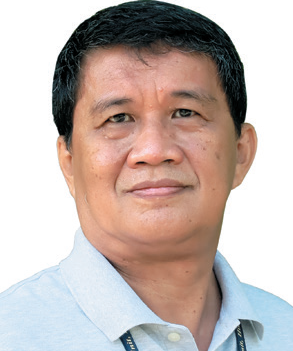
JOSE O. PEPINO, JR.
Secretary to the Sanggunian

SUNRISE B. TUMANDA
Municipal Social Welfare and Development Office

URSINA B. GANADE
Municipal Civil Registrar
DEPUTY OFFICE HEADS

JUANITO A. BALBUTIN
OIC-College President
Hinatuan Southern College

QUERUBEN A. ROSALES
Zoning Officer III
MDRRMO-Designate

MILLY U. VIOS
Special Assistant to the Mayor

MELANI H. SAYAWAN
Administrative Officer V (HRMO III)

JERALD NEIL D. LAURENTE
Ecological Solid Waste Management Officer
MENRO-Designate

GEMMA S. MILLAN
Tourism Operations Officer II
Information Officer-Designate
BARANGAY OFFICIALS

HON. FILMORE M. VIOLA, JR.
Barangay Loyola
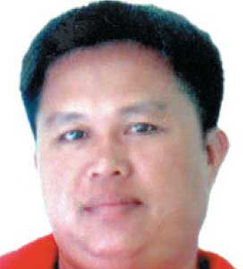
HON. HONORIO S. VILLALUZ
Barangay Sto. Niño

HON. CELSO D. TAMBASACAN
Barangay Talisay

HON. DEXTER P. NAUPAN
Barangay Tidman

HON. ARNOLDO S. CABILIN, JR.
Barangay Tagasaka

HON.EDGARDO L. RENDON
Barangay Cambatong

HON. ANDRES C. GADAT, JR.
Barangay San Juan

HON. ARGENITA S. CASTAÑAS
Barangay Harip

HON. ELENITA F. SOBRIANO
Barangay Maharlika

HON. RENE J. ACASO
Barangay Bitoon

HON. ABELITO S. BONGGOT
Barangay Baculin
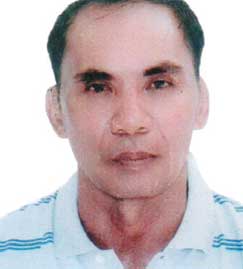
HON. PEDRO P. LLANOS
Barangay Portlamon

HON. TEODORO D. BOISER
Barangay Roxas

HON. EMELIANA Z. NERI
Barangay San Ramon

HON. NILA V. SABADO
Barangay Aquino

HON. ROGELIO L. CAPUNONG
Barangay Pocto

HON. VIRGINIA M. LINDO
Barangay Tiwi

HON. SANNY C. BASIGSIG
Barangay Maligaya

HON. REYNALD F. FUNDADOR
Barangay Sasa

HON. JUBI A. ABDULA
Barangay Tarusan

HON. CANDIDO L. CABILIN, JR.
Barangay Campa
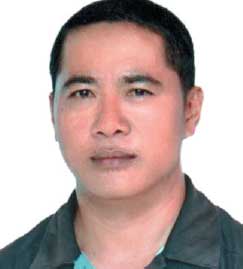
HON. DANELITO S. SABADO
Barangay Bigaan

HON. FLORENZ A. CAÑEDO
Barangay Lacasa

HON. LEOJIM T. LINDO
Barangay Dugmanon
LATEST NEWS
Super Health Center soon to be inaugurated
Super Health Center soon to be inaugurated The Super Health Center in Hinatuan signals a significant advancement of the local government's healthcare infrastructure. This government health facility is expected to offer basic and specialized health services to the...
Work-in-progress Enchanted River New Boating Station set to be operational soon!
This is another tourism-related centerpiece projects under the present administration led by Mayor TiTing Garay , Vice Mayor Atty. Tito Canedo III and Sangguniang Bayan Members. #enchantinghinatuan#hinatuantourism
Mandatory Training for Sangguniang Kabataan Secretaries and Treasurers
The Sangguniang Kabataan Treasurers and Secretaries of the Municipality of Hinatuan are currently participating in the mandatory training for Secretaries and Treasurers, January 24, 2024, at FITS Center. Spearheaded by Local Government Unit of Hinatuan thru Local...
FITS Building established in Hinatuan
The Local Government Unit of Hinatuan launched its new information technology center which is called Farmers' Information and Technology Services (FITS) Center on May 18, 2023. Municipal Mayor Shem G. Garay led the formal turn-over of the new building, together with...
Jet Lee visits Enchanted River
May 13, 2023 - Popular motovlogger and Ambassadress of the Philippine Motorcycle Tourism Jet Lee led the motorcycle enthusiasts and riders from all over the Philippines in coming to Enchanted River as part of the Loop de Madrid - Surigao del Sur event. Loop de Madrid...
Hinatuan Government Employees and Community Multi-Purpose Cooperative (HIGEMCO MPC) 27th Annual General Assembly
The event was graced by the Municipal Officials led by Acting Municipal Mayor Atty. Tito Canedo III who encouraged the participants through his message to be actively involved in the affairs of the co-operative, and sail together towards its high hopes and dreams....
Hinatuan conducts monthly cleanup drive
Mayor Shem G. Garay said the recently-conducted cleanup drive was successful, thus, the monthly municipal wide cleanup campaign should be done once a month to help in maintaining cleanliness all over the municipality, especially its coastlines. Maintenance workers...
Hinatuan recognized as Outstanding PhilHealth Partner
The Philippine Health Insurance Corporation (PhilHealth) recently awarded a plaque of recognition to Local Government Unit of Hinatuan in recognition of its invaluable support in the fulfillment of PhilHealth's mandate of providing social health insurance services to...
Hinatuan puts up checkpoint to monitor COVID-19
The local government of Hinatuan has established monitoring checkpoint in entry point going to Enchanted River as a precautionary measure against the novel corona virus disease (COVID-19). The move aims to facilitate the speedy tracking of persons who had traveled to...
Hinatuan bans pigs, pork and pork by-products from Luzon
The Local Government of Hinatuan has issued a temporary entry ban on live pigs and pork products from Luzon from entering the municipality. The move is to protect local swine population from the African Swine Fever (ASF). Mayor Shem G. Garay in a meeting with hog...

